#fali mistry
Explore tagged Tumblr posts
Photo





Guide (1965) // dir. Vijay Anand // d.o.p. Fali Mistry
Wahan kaun hai tera
[ Whom do you have there? ]
Musafir jayega kahan
[ Traveller where will you go? ]
#guide#guide 1965#vijay anand#dev anand#fali mistry#r. k. narayan#r k narayan#indian cinema#hindi cinema#cinema#films#movies#film scenes#movie scenes#screencaps#cinematography#bollywood#old bollywood#bollywood movies#classic bollywood#classic cinema#world cinema#indian films#indian movies#hindi films#1965#1960s#1960s cinema#1960s films#1960s movies
19 notes
·
View notes
Text
14 novembre … ricordiamo …
14 novembre … ricordiamo … #semprevivineiricordi #nomidaricordare #personaggiimportanti #perfettamentechic #felicementechic #lynda
2017: Shyama, nata Khurshid Akhtar, attrice indiana che �� apparsa in film hindi. È stata attiva tra il 1945 e il 1989. È nota soprattutto per i suoi ruoli in Aar Paar e Barsaat Ki Raat. L’attrice Noor (nome completo Noorjahan) era sua sorella minore, che sposò l’attore comico Johnny Walker. Shyama era sposata con il direttore della fotografia Fali Mistry dall 1953. Matrimonio tenuto segreto per…

View On WordPress
#14 novembre#Cecil Antonio Richardson#Charlotte Coleman#Charlotte Ninon Coleman#Eddie Bracken#Edward Vincent Bracken#Gene Anthony Ray#John Brown#Johnny Mack Brown#Khurshid Akhtar#Mario Scarpetta#Morti 14 novembre#Personaggi famosi#Shyama#Tony Richardson#Virginia Cherrill#Warren Misell#Warren Mitchell
1 note
·
View note
Photo

Dev Anand was the lead hero in a 1970 Hollywood Film 'The Evil Within', directed by Lamberto V. Avellana. The sincere, die-hard fans of the Evergreen Dev Anand might know about this rare fact but for many young friends here, it should be a fascinating trivia that the one and only Dev Anand also featured in an American film along with Zeenat Aman and Kieu Chinh, a leading lady from Vietnem in the year 1970. In fact, Zeenat Aman was signed for 'Hare Rama Hare Krishna' 1971), after Dev Anand chose her to feature in this English film as one of his leading ladies. So before the cult movie 'Hare Rama Hare Krishna', Dev Anand and Zeenat Aman actually appeared together on the screen in this Hollywood venture. The crime melodrama titled 'The Evil Within' was a 20th Century Fox production, produced by Rolf Bayer and Directed by Lamberto V. Avellana. It was also reportedly known as 'Passport To Danger' being its alternative title. Interestingly the cinematographer of this Hollywood film was Fali Mistry who was a close associate of Dev Anand in many of his films of those times including Guide (1965). But as an experiment the film didn’t do that well at the box office and therefore coudnt reach millions of Dev Anand fans in India. And due to this very reason it also got lost in the shining cloud of other memorable films featuring the maestro in that Golden Era of Indian Cinema. (Image: Dev Anand with Vietnam actress Kieu Chinh and others in a still from the Hollywood movie 'The Evil Within') Courtesy- Imprints and Images of Indian Film Music
3 notes
·
View notes
Text
About Saajan Ki Galiyaan
About Saajan Ki Galiyaan
Sajan Ki Galiyan, 1966. If there is one director Sadhana worked with extensively, it was Raj Khosla. The two teamed up for four films – Ek Musafir Ek Hasina (1962) and Khosla’s unforgettable mystery trilogy with the actress – Woh Kaun Thi? (1964), Mera Saaya (1966) and Anita (1967). Few know that sometime in the 1960s, there was a fifth film the director-actress were working on, Sajan Ki Galiyan.…
View On WordPress
0 notes
Link
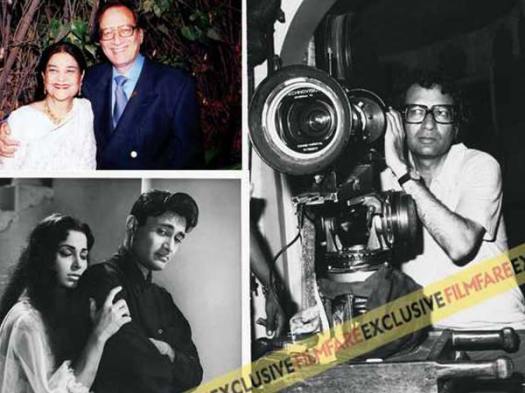
Ask any director who he’s been influenced by and Vijay Anand’s name will feature notably in that list. Because the filmmaker was not just a textbook of cinema. He was an entire curriculum. Not limited by any genre or stymied by his own sensibilities he could flit through comedy, thriller, drama, musical and even masala fare with ease. His directorial excellence was as much about his deft camera work as it was about his nuanced characters. Waheeda Rehman in Guide, despite playing an adulteress, went on to become an iconic symbol of rebellion. Vyjayanthimala went notches further as a dancer after she kept pace with his trailing camera in Jewel Thief. Shammi Kapoor became India’s answer to Elvis Presley as he matched Anand’s vision of a rockstar in Teesri Manzil. So did Mumtaz drape her sexuality in homely cotton sarees to give her best performance in Tere Mere Sapne…

Anand’s songs too outlived his times, most being the pride of satellite TV. Love awakening against a rising sun in Tere mere sapne ab ek rang hai. Dreams lettered in Pal pal dil ke paas… Love scaling heights in Dil ka bhanwar… Vijay Anand’s creative picturisations took the story forward. “My camera listens to the song and moves with it,” he once said. Long shots, lush backdrops and sharp intercutting brought out the poetry in the prose.
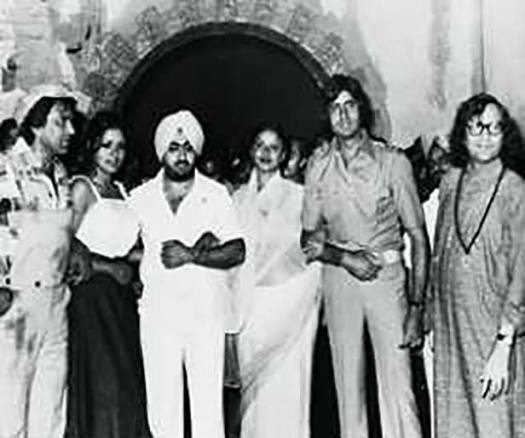
Yet Anand’s life was not confined to the boundaries of fame. He was essentially a seeker, his quest leading him to somewhere finding the ultimate answers with guru UG Krishnamurthy. It was also this philosophical side that helped him tide an ebbing career and health. For someone who could almost predict the period of his death, the shenanigans of fate were no threats. Today, Anand’s genius lives on in the cinematic jargon. In fact, Sriram Raghavan’s Johnny Gaddar, a noir thriller, paid a subtle tribute to the master in a scene where his blockbuster Johny Mera Naam played… Memories of an unforgettable man and an extraordinary filmmaker in the words of wife Sushma Anand… THE MAKER Goldie’s (Vijay Anand’s pet name) childhood was spent in Gurdaspur in Punjab. A fair child with blonde curls, he was naughty. Hence, his father called him ‘Goldilocks’. With time, locks nikalgaye, ‘Goldie’ rehgaya! Goldie lost his mother when he was seven. He, along with his two older sisters (they were a family of nine siblings), came to live with Chetan saab (Anand, filmmaker) and Uma bhabhi (Anand) at their ‘shack’ in Juhu. Chetan saab was older to Dev saab (Anand, actor/filmmaker) by 10 years, who in turn was older to Goldie by 10. Uma bhabhi was like a mother to Goldie and had a great influence on him. She urged him to write, given his sharp imagination. Goldie often said, “I owe everything to Bhabhi.”
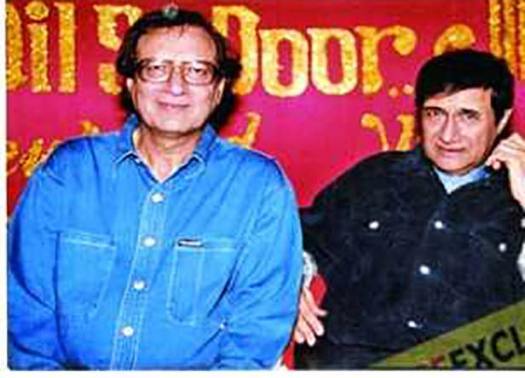
While Goldie was studying in St Xaviers College in Mumbai, he directed several plays, including the play Rehearsal. It was a takeoff on Hamlet and the catch phrase ‘to be or not to be’. Just out of college, Goldie wrote the script of Navketan’s Taxi Driver (1954), with Uma bhabhi, which Chetan saab directed. He had also written the script of Nau Do Gyarah (1957) and wanted to direct it but didn’t have the courage to tell Dev saab about it. Once when Dev saab was going to Mahableshwar, he asked Goldie for the script to read it on the way. Goldie refused saying he’d narrate it himself. He hopped in the car and narrated the story through the journey. On reaching Mahableshwar, Dev saab called his office and said, “Navektan’s next production will be directed by Vijay Anand. Make an announcement!” From then Goldie’s career as a director took off.
Kala Bazaar (1960) was one film where all the three brothers worked together. Dev saab produced it. Goldie wrote and directed it. Chetan saab acted in it. During his college days, Goldie would see tickets being sold in black at theatres including Metro, Liberty and Empire… That gave birth to this concept. He even included real shots of the premiere of Mehboob Khan’s Mother India with actors including Dilip Kumar, Nargis Geeta Dutt, Guru Dutt, Raaj Kumar and Rajendra Kumar.
Amarjeet, who was a publicist and Goldie’s friend, lived in Chetan saab’s shack with Goldie. Once, Goldie fell sick. Amarjeet nursed him with affection. He’d serve him soup, press his legs, check the temperature… Goldie promised him a directorial assignment. Goldie wrote a detailed script of Hum Dono (1961, had Dev Anand in a double role) with everything marked…. entry, exit, camera placement… so that Amarjeet wouldn’t face difficulty while directing. But yet Amarjeet couldn’t do it. Finally, Goldie directed the film but gave Amarjeet the credit that he’d promised him.

Nutan was one of Goldie’s favourite actresses and suited perfectly in the comedy Tere Ghar Ke Saamne (1963). Dil ka bhanwar had a beautifully filmed song. It was shot in the Qutub Minar to get the feel of Delhi. The duo (Dev-Nutan) climbs up as friends but when they come down, they’re lovers. The song Ek ghar banaaonga had camera tricks – Nutan is seen in the glass of whiskey. Guide (1965) was Navketan’s first film in colour. Based on RK Narayan’s novel The Guide, Tad Danielewski was directing the English version for writer Pearl S Buck. Chetan saab was to shoot the same scenes for the Hindi version He found it frustrating. So when he got a financier for Haqeeqat (1964) he quit. Goldie accepted it on the condition that he’d rewrite the script as a subject like blatant adultery would not be accepted by Indian audiences. Guide became a classic because it excelled in photography (Fali Mistry), acting (Dev Anand-Waheeda Rehman), music (SD Burman), editing (Vijay Anand and Babu Shiekh)… The song Tere Mere Sapne was shot in the early light in Udapiur. It was an emotional mood where Dev saab builds hope in a dejected Waheeda Rehman. Aaj phir jeene ki tamanna hai was filmed in the Chittorgarh Fort in Rajasthan. Her playing with the straw showed her light-heartedness. When she throws the matki singing dil woh chala it spoke of shedding the past and new beginnings. The finest compliment for Goldie came from RK Narayan who said, “The film is more beautiful than my book.” Goldie went on to direct the spy thriller Jewel Thief (1967). For the legendary Hothon pe aisi baat filmed on Vyjayanthimala, three to four cameras were put up including a trolley camera. Later, Dev saab was to do Nasir Hussain’s thriller Teesri Manzil (1966). When he couldn’t, Shammi Kapoor was roped in. Initially, Shammiji came at his own time. But he realised that this man comes at 9 am with a ready script and his cameras are placed beforehand. He too began coming on time. Shammiji and Goldie struck a great rapport. Aaja aaja and Oh haseena zulfonwali will always be remembered for their energy, Shammiji playing a musician in the film. O mere sona re is my favourite because through the song Goldie played interestingly with Shammiji’s briefcase. Later, Johny Mera Naam (1970), an entertainer, further proved Goldie’s versatility. In Pal bhar ke liye… Goldie played with the windows, where the persistent lover (Dev saab) finally woos the heroine (Hema Malini).

A film that remained close to Goldie’s heart was Tere Mere Sapne (1971, based on AJ Cronin’s The Citadel). He was hurt that the ‘sensitive’ film was not a commercial success. It was the story of human relationships amidst materialism. Goldie met doctors to understand the authentic body language for his doctor protagonist (Dev Anand). The songs were unique too. Mumtaz sings Radha ne maala japi when she accepts the hero’s marriage proposal. Hey maine kasam li was filmed on Dev saab and Mumtaz on a bicycle. Jeevan ki bagiya was shot in close-ups and established their intimacy. But the less heard Mera antar ek mandir, a song, which hinted at conceiving a baby, was Goldie favourite. Goldie liked Nutan and Waheeda for their expressive eyes. He found Nanda to be a fine artiste as much as he liked Asha Parekh for her naughtiness. But in Mumtaz, he saw a great dancer and actress. Basically, he liked simplicity in a woman.
My favourite in Blackmail (1973) is Mile mile do badan. It’s the first time that the couple (Dharmendra-Raakhee) have come together. They’re hiding among the wood pile in the jungle even as dogs are sent to hunt them. The danger and intimacy makes the song beautiful. Pal pal dil ke saath is romantic because of the dreamy picturistaion. He directed some more films like Chhupa Rustom (1973), Ram Balram (1980) and Rajput (1982) but didn’t meet with much success. He also happened to act Kora Kagaz(1974) and Main Tulsi Tere Aangan ki (1978), which were huge hits. Goldie was proud of his later films Hum Rahe Na Hum (1984), a relationship saga that featured him with Rehana Sultan and Shabana Azmi and Jaana Na Dil Se Door with newcomers. Sadly, he couldn’t release them and that left him dejected. He’d say, “Perhaps, my time is over.”

THE MAN Goldie and I got married in 1978 during the shoot of Ram Balram. We cared for each other to the extent that we wanted to get married. He liked my simplicity. I understood his temperament. He rarely lost his cool. I was the one who’d lose my temper. I was crazier. I’d deliberately do things to annoy him. Sometimes, he manaoed (cajoled) me, sometimes I manoed him. Yes, women did throw themselves at him. But I never felt jealous or insecure. Rather, I’d tease him, “Main dekh rahi hoon! Maze karo! Enjoy yourself.” He rarely complimented me but when he did it made me happy. He liked me in sarees and sometimes picked up sarees and pieces of jewellery for me.
We loved to travel. Our best holiday was in Hampstead in London just after our marriage. There were theatres across the road. We shopped a lot. Once when we were in Europe, he quietly slipped out. “Yeh lene gaya tha,” he said later showing me a sweater he had bought for me.

He had a passion for ballroom dancing, waltz and fox trot. As a youngster, he’d travel from Chetan saab’s shack to a school in Colaba to learn waltz. He did a dance with Bindu in Chupa Rustom. The song Joh main hota ek toota tara was filmed on the bonnet of a car. He also loved shirts. He’d pick a dozen at a time. He was fond of watches and cologne and had grown fond of horses when he was working with Kalyanji Anandji.
Chetan saab’s shot division was superb. But Chetan saab changed things on the set, he was spontaneous. While Goldie went fully prepared. That’s why actors understood they couldn’t fool with him. They understood he meant business.

Goldie liked Guru Dutt’s realism, Raj Kapoor’s glamour and the existentialism in the works of Satyajit Ray. Meghe Dhaka Tara (1960) by Ritwik Ghatak was his favourite. But as a filmmaker he didn’t want to make realistic movies. He’d say, “This is a media for entertainment!” Goldie was not fond of drinks and nursed a peg throughout the evening. Rather, he was interested in spirituality and astronomy. He had read all religious books – the Gita, the Bible, the Upanishads, the Koran… He became a disciple of Osho Rajneesh but reached a dead end when he couldn’t find answers. Then he met UG Krishnamurthy (spiritual guru) in whom he found solace. UG once said, “If anyone, anywhere has understood me, it’s Goldie.” Instead of revolting, he accepted life as it came. He was against pretence. He never missed his past glory. He’d say it was a closed chapter. He didn’t want to write his biography. He believed, “Joh hoga so hogaya. My work will speak for itself.”
Towards the end he had developed a heart problem. Vaibhav had assisted him in Jaana Na Hum Se Door and then went off to attend a filmmaking course at the Lee Strasburg Institute in New York. Vaibhav returned in January 2004. Goldie passed away in February 2004. In fact, having some knowledge of astrology Goldie had predicted that February 2004 was a bad month for him. His only regret was that he couldn’t do much for our son Vaibhav, who’s inherited his sensibilities. After he passed away you do tend to get isolated. But it’s fine. I’ve taken to singing – something I was always interested in. And in my circle of friends I often sing Tere mere sapne ab ek rang hai…

YOU MUST KNOW…
Taxi Driver was inspired by Hollywood’s noir movement
Nau Do Gyarah was an urban thriller/road film with elements borrowed from Frank Capra’s It Happened One Night (1934).
Vijay Anand filmed Aaja panchi akela hai in a constricted space (a room and a toilet!) in Nau Do Gyarah. The film’s other hits were Hum hain rahi pyar ke and Aankhon mein kya ji.
Rhim jhim ke tarane (Kala Bazar) is remembered for Dev Anand and Waheeda Rehman under an umbrella!
In Tere Ghar Ke Saamne, Anand used camera tricks where Dev Anand imagines Nutan inside his drink! Then Dev’s aide puts an ice cube into the glass causing Nutan to shiver!
Hum Dono with Sahir Ludhianvi’s lyrics and Jaidev’s music gave the immortal gems Allah tero naam and Abhi na jaao choddh kar.

Aaj phir jeene ki tamanna hai (Guide) had Waheeda dancing along the ledge of the temple while Tere mere sapne was canned in just three shots.
RD Burman’s rock n roll inspired score in Teesri Manzil gave Shammi Kapoor his rockstar image.
Jewel Thief’s Hothon pe aisi baat had Vyjayanthimala gliding through an entire stanza in one take.
Johny Mera Naam had Hema Malini riding on a cable T-bar on Dev Aand’s lap
The great music and picturisation of Anand’s films can largely be credited to composer SD Burman, lyricist Shailendra and cinematographer Fali Mistry who translated his vision.
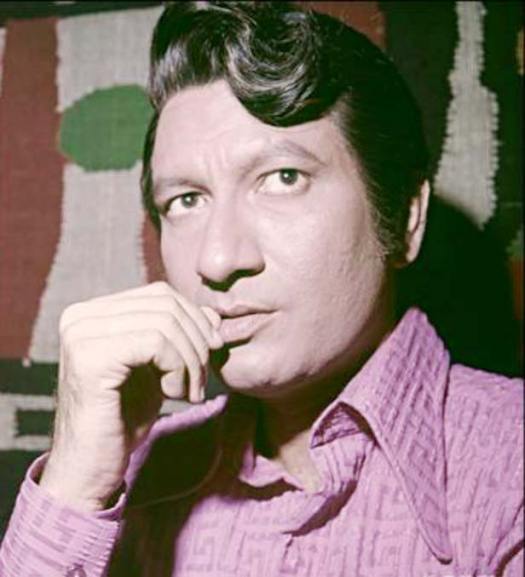
0 notes
Text
Yesteryears film heroine Shyama, whose vim and spontaneity lit up song sequences in Guru Dutt’s breezy crime yarn, Aar Paar (1953), and AVM productions’ weepy social, Bhai Bhai (1956), passed away in Mumbai on Tuesday. She was 82, says film data website IMDB. According to a 1952 book, though, she would have been 84. In a career spanning nearly four and half decades, Shyama acted in at least 140 movies essaying an assortment of lead parts, character roles and, what can be best described as, blink-and-miss parts. Two of her most remembered performances came playing grey characters in box-office biggies: Bhabhi (1957) and Chhoti Bahen (1960). Her lone Filmfare Award as Best Supporting Actress was a reward for her performance in Sharada (1957), an uncommon Raj Kapoor- Meena Kumari venture. Born as Khurshid Akhtar, the Lahore-born actor first appeared on screen as a pre-teen in Noor Jehan’s Zeenat (1945). A period of struggle followed. “Shyama worked assiduously and ceaselessly in 80 pictures, be it as an extra or as a chorus girl, till she was cast as the other girl to complete the love triangle in Tarana (1951) and Sazaa (1951),” says her profile in the book, Stars of the Indian Screen, published in 1952. The book was edited by Baburao Patel of the influential Filmindia magazine. Tarana had Dilip Kumar and Madhubala in lead roles while Sazaa paired Dev Anand with Nimmi. Sazaa was directed by Fali Mistry, the celebrated cinematographer. When he told her – as Shyama revealed in an interview for the Rajya Sabha tv – that she looked nice from every angle, she fell for him hook, line and sinker. The two got married in 1953. Aar Paar, released the same year, was the turning point in her career. As a vivacious girl in love with a slick, down-and-outer played by Guru Dutt, Shyama brought the right degree of effervescence and naivete to the role. The ageless duet Sun sun sun sun zalima (music director: OP Nayyar, singers; Rafi, Geeta Dutt) had her waltzing in a dungaree with the director-actor. In every step, Shyama’s unselfconscious ease matches the lilt and impishness of Geeta Dutt’s voice. “Guru Dutt was a good dancer. He taught me the moves. I just followed them,” she said in the tv show, Guftagoo. Perhaps Shyama was at her elegant best in the song, Ae dil mujhe bata de (film: Bhai Bhai), expressing the exuberance of early ardour in flawless rhythmic grace. “Whenever those songs are shown on tv, people call me up,” she said in an interview. Now she is gone. But like her songs, Shyama too will endure. The Times of India : 15th. Nov,17
YESTERYEARS FILM ACTRESS SHYAMA, HEROINE OF GURU DUTT’s AAR PAAR’ PASSED AWAY IN MUMBAI AT THE AGE OF 82 YEARS: Yesteryears film heroine Shyama, whose vim and spontaneity lit up song sequences in Guru Dutt's breezy crime yarn, Aar Paar (1953), and AVM productions' weepy social, Bhai Bhai (1956), passed away in Mumbai on Tuesday.
0 notes
Link
Year – 1953 Language – Hindi Country – India Producer – Film Trust Of India Director – Fali Mistry Music Director – S. D. Burman Box-Office Status – Cast – Madhubala, Jagirdar, Shakila, Gulab, Dev Anand, Murad, K. N. Singh Miscellaneous Information – Not Available. […]
0 notes
Photo

14 notes
·
View notes
Text
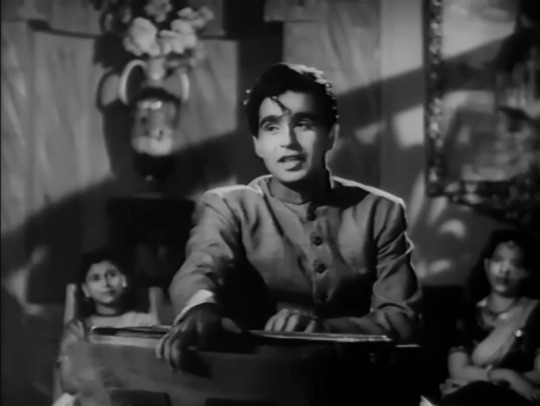
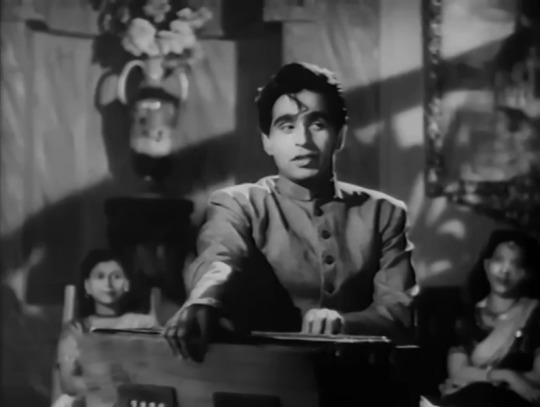
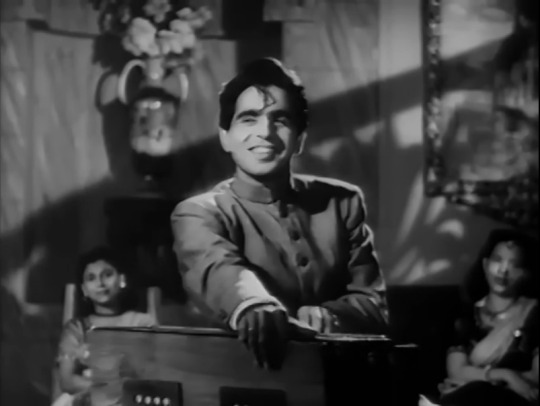
Dilip Kumar in Babul (1950)
[ dir. S. U. Sunny | d.o.p. Fali Mistry ]
#babul#babul 1950#dilip kumar#indian cinema#hindi cinema#bollywood#cinema#movies#films#old bollywood#classic cinema#bollywood movies#indian films#world cinema#1950s#indian movies#cinematography#hindi films#hindi movies#bollywood films
15 notes
·
View notes